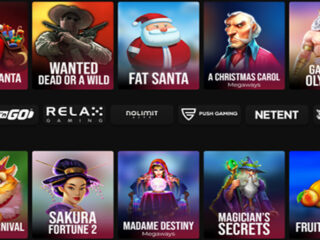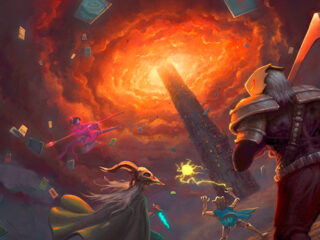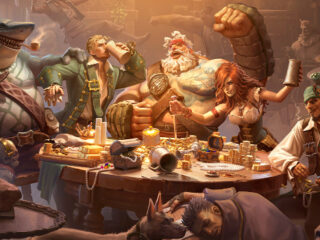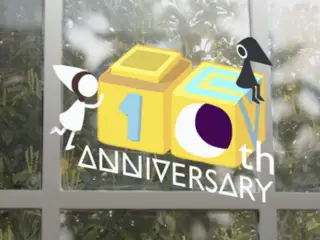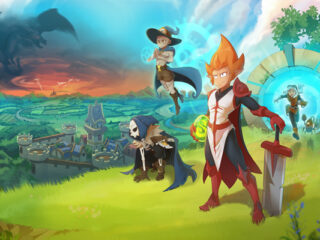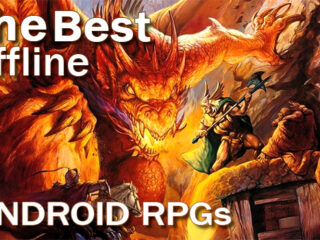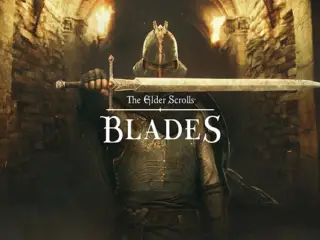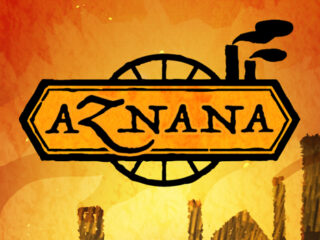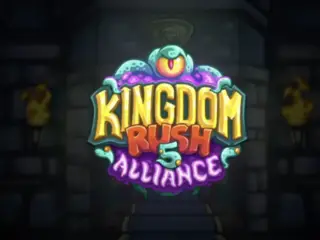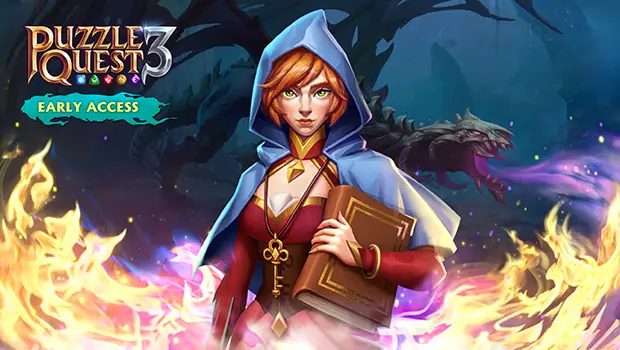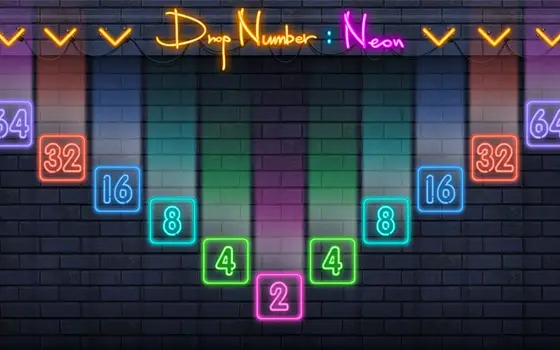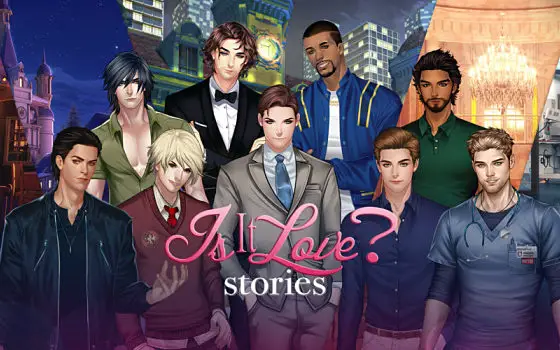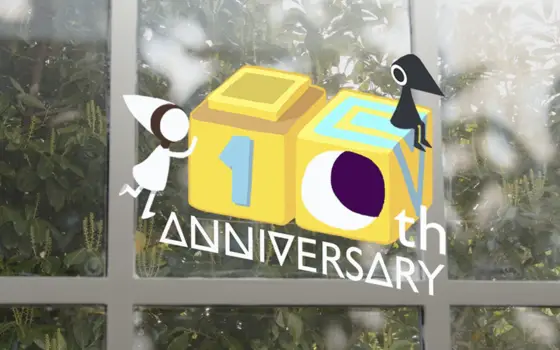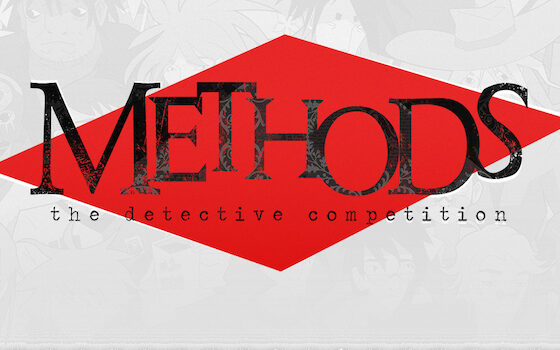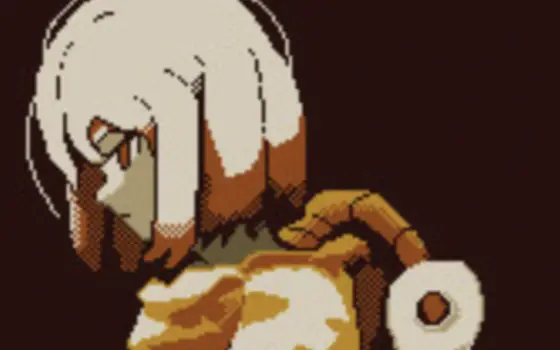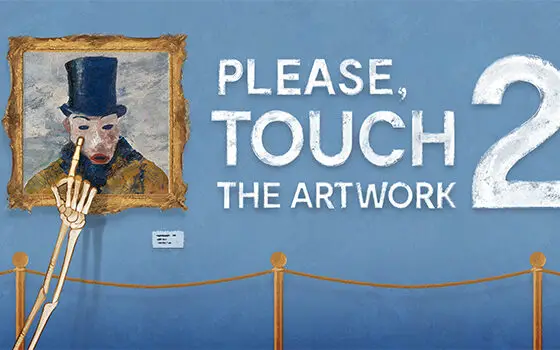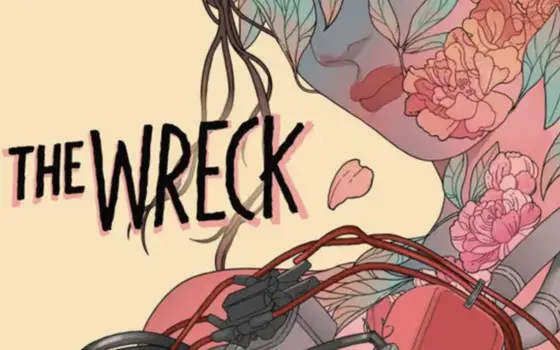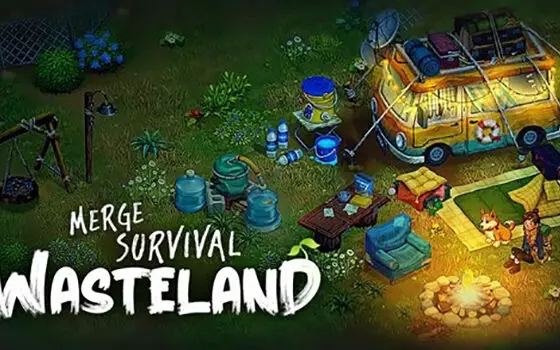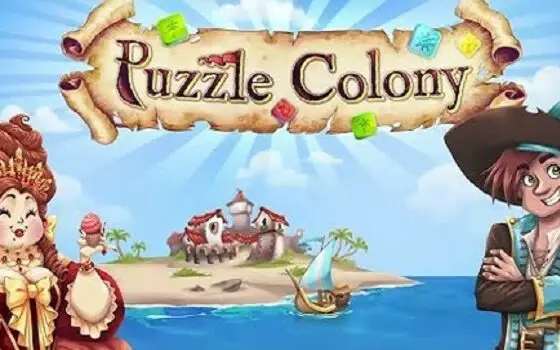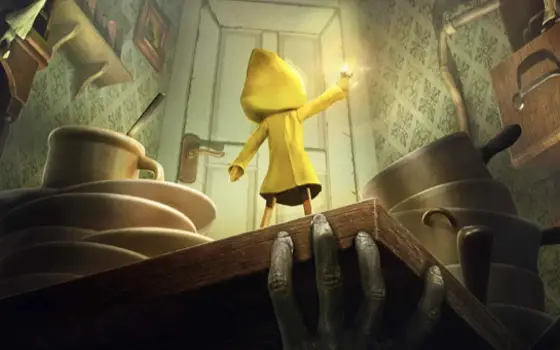Say That Again!
In 2007, a genre-changing game released for the Nintendo DS and PlayStation Portable. Puzzle Quest: Challenge of the Warlords combined high-fantasy RPG elements with the tile-matching mechanics made popular by games like Bejeweled. It offered a truly innovative gameplay experience. Multiple ports, expansions, sequels and spin-offs in the form of Puzzle Quest: Galactrix and Marvel Puzzle Quest, which I played endlessly for years, soon followed. I was beyond excited when I heard that Puzzle Quest 3 was not only in development by Infinity Plus Two but available in early access.
There are two ways to assess Puzzle Quest 3, the first of which is possibly unfair but also inevitable. You can compare it to the games in the franchise that came before it or you can try to judge it on its own merits. In either category, this game falls short to some degree, yet also introduces some interesting changes.
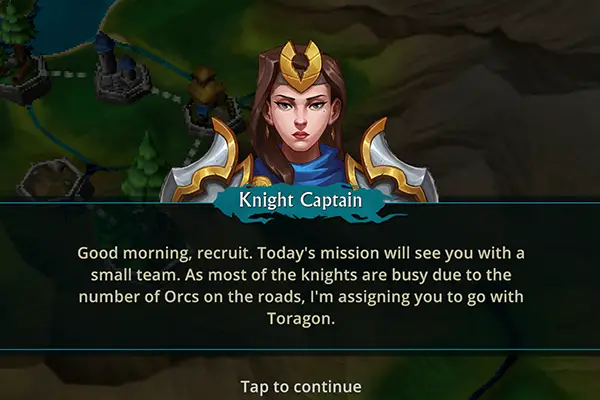
What Have You Done?
Having recently purchased the updated Nintendo Switch port of Challenge of the Warlords, I’d like to look at the changes from the first game to the third. Some of these differences are for the worse. The game board size has been cut by nearly two-thirds, eliminating much of the challenge of finding and making good matches. A smaller board means moves are easier to spot. It’s like playing advanced Sudoku puzzles for years and then accidentally picking up a beginner’s version. Your mind goes into snooze mode because it’s just not as stimulating.
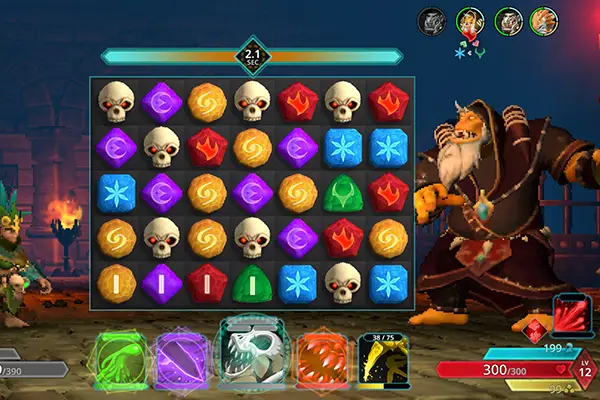
In CotW, you and your AI-controlled opponent take turns making moves on the board. You have to be strategic with your matches. The board might present multiple good options, but you can only pick one, thereby leaving the others for your enemy to attack with. You could also inadvertently create a powerful tile lineup to be used against you. Should I match the red tiles and power up my spells? Or do I match the blue ones because that’s what this drooling ogre needs to use his special ability? It’s an exciting give and take. Well, that’s been eliminated in Puzzle Quest 3. Now only you access the game board, so it no longer matters what you match or neglect to see. You can often just catch it in your next turn.
Puzzle Quest 3 also only allows you to equip four abilities at a time. These might be a heal, a poison, a fire attack and a mana-draining spell. Compare that to CotW, which lets you have seven skills on your roster. Reducing the number not only constrains your options, but also eliminates even more of the strategizing that was previously necessary and provided a welcome challenge.
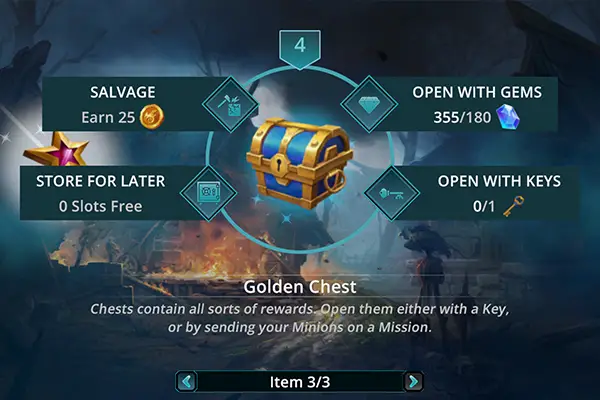
Okay, This Might Work
So what’s good? One of the touted improvements of PQ3 is that it now has 3D graphics. Previous titles featured a flat animated game board for puzzle segments and a 2D isometric view for navigation on the world map. The map in PQ3 still resembles previous versions, but battles occur in a 3D space. Your character and enemies are fully rendered and animated, although they are more pixelated than one would expect in a game developed for modern mobile devices.
Matching tiles also works slightly differently now. You can slide tiles diagonally in addition to horizontally and vertically. This opens up moves that were previously not possible. Also, you create an uber tile when matching more than three tiles at once, which contains the power of those tiles combined. For example, matching six skulls will create a skull tile marked with a “III.” Matching this special tile will add the strength of three additional skulls to your attack.
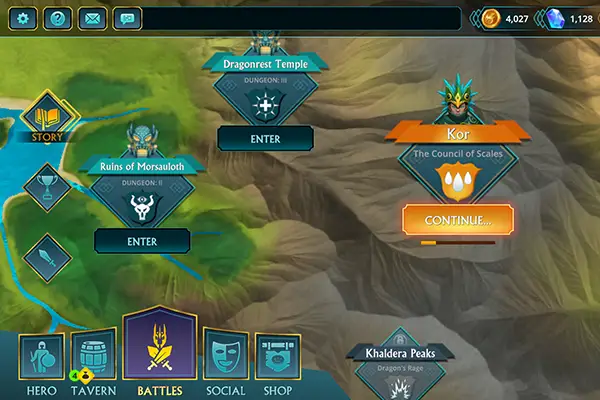
Another change is that you now have limited time to make your matches. In previous games, you would make a single match and then your turn ended. Now, if you’re quick enough, you can make multiple combinations, creating chains of attacks and filling your mana bars much quicker. I usually pause to plan out all of the matches I’m going to attempt and then see how fast my fingers can move.
PQ3 now also offers PvP, where you fight AI-controlled snapshots of other players’ teams. There are trophies, leaderboards and special PvP currency. One major negative is that I very often found myself matched with an opponent double or even triple my level and strength. You can’t skip fights, so I’d have to enter a battle knowing that I was going to lose, and that’s in no way fun.
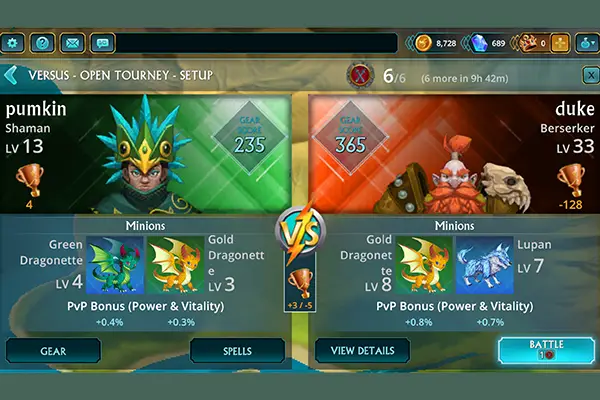
Free-to-Play, Huh?
PQ3 has in my mind earned the unfortunate distinction of possessing one of the worst and most blatantly money-grubbing game mechanics I’ve encountered in a mobile game. After nearly every battle, you earn a chest that requires a corresponding key to unlock. A wooden chest requires a wooden key, a diamond chest needs a diamond key, and so on. The fancier the chest, the more likely that there’s drool-worthy loot inside. You’ll have a steady influx of keys for the lesser chests, but you almost never loot the keys needed to open the more enticing containers.
How do you open these elite chests then? Two ways, one of which I’m sure you can guess. The first is the free-to-play option, which is laughable at best and mind-boggling at worst. While playing, you acquire minions whose sole purpose is to increase your stats in PvP and open the chests for which you don’t possess keys. These minions take ages to open a chest, anywhere from 6 to 24 hours in real time. And after a minion undertakes the arduous task of unlocking a chest for you, they must rest for another 12 to 48 hours.
Your free-to-play options are further limited by the fact that you can only store, and therefore have minions unlock, two chests at a time. Any chests in excess of this must be salvaged for coins or opened with gems, slowly earned in-game currency. The number of storage slots increases as you progress through the game, but at a rate so slow as to be negligible.
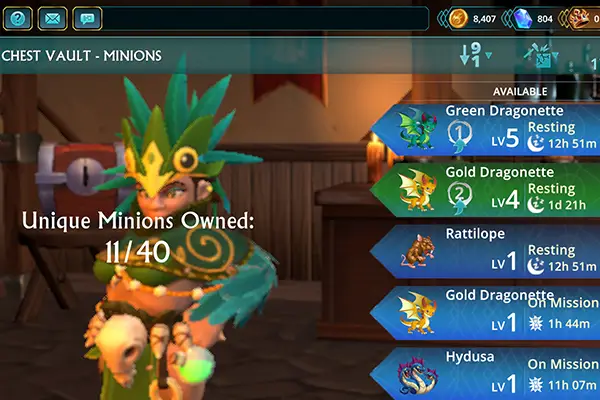
Get Your Hands Outta My Pockets
The second option for opening chests is, of course, to spend real money. PQ3 has a VIP option, which currently costs $9.99 per month. Being a VIP earns you three low-level keys per day but also grants a third chest storage slot. That’s right. For $10 a month, you can store one whole extra chest. But the shameless digging into your pocket doesn’t end there. Upon accessing the in-game store, one of the first things you’ll notice are the key bundles.
Gems pay for the small key pack; crowns will get you the large key pack. This is the one that really matters because it contains keys for the better chests. The only way that I could discern to obtain crowns is to buy them with real cash. The cost of a large key pack therefore equates to about $19.99. Keep in mind that I looted multiple golden, ruby and diamond chests daily. So you would have to spend that amount nearly every day to open just some of the higher tier chests that you receive.
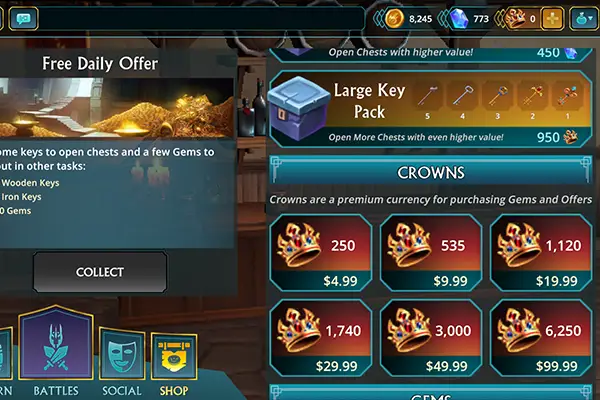
The constant shortage of keys combined with my refusal to pay exorbitant prices for digital items left me with two choices. I either constantly salvaged chests that I knew possibly contained loot that I wanted, which hurt, or I simply didn’t play for huge swaths of time as I waited for my minions to unlock chests and then recover for hours. In other words, if I wanted to open all of the chests that I looted, I could only play a few battles per day. Did I mention that this is one of the most frustrating, horribly designed and transparently greedy gameplay mechanics I’ve ever encountered? Well, let me reiterate.
A Smiley and Frowny Emoji
Puzzle Quest 3 is by no means a bad game. It’s in fact one of the better ones I’ve played on Android in a while. But that doesn’t mean it’s great. Whether judged on its own or held against the bar set by previous titles, this latest entry in the franchise is entertaining but also disappointing. While most of the shortcomings can be overlooked, the outrageous monetization cannot be ignored.
Is It Hardcore?
Potentially.
If the developers can tone down their exorbitant monetization, Puzzle Quest 3 would offer a much more enjoyable experience. Otherwise, the constant inability to progress at a steady pace due to lack of resources is a hindrance and frustration.
